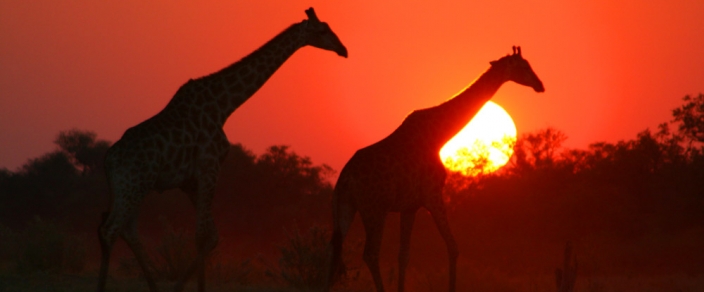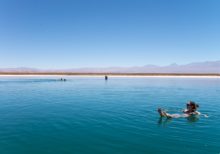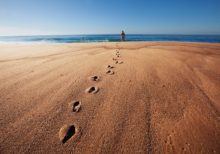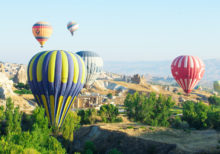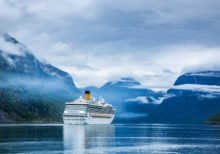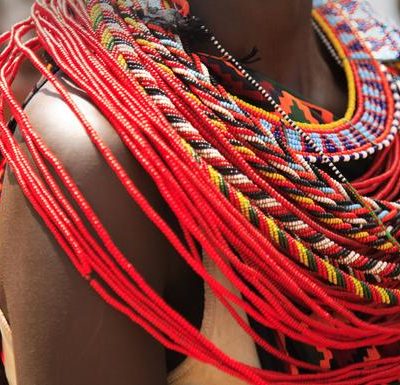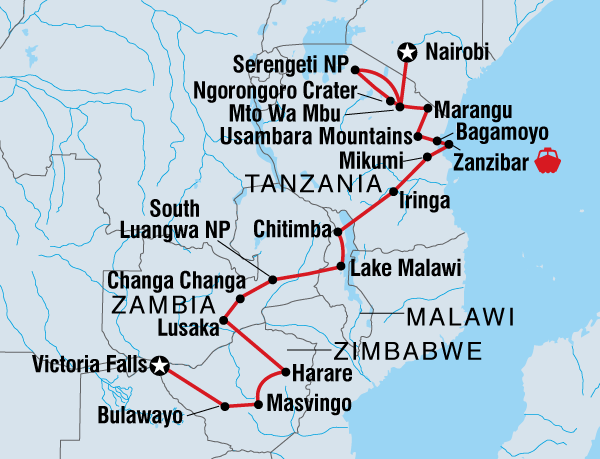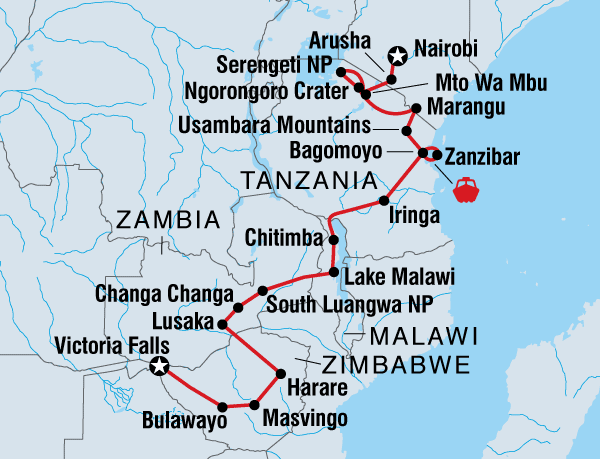| Starts | Nairobi, Kenya, Kenya |
|---|---|
| Ends | Cape Town, South Africa, South Africa |
| Region | Africa |
| Duration | 36 days |
| Tour Operator | Peregrine |
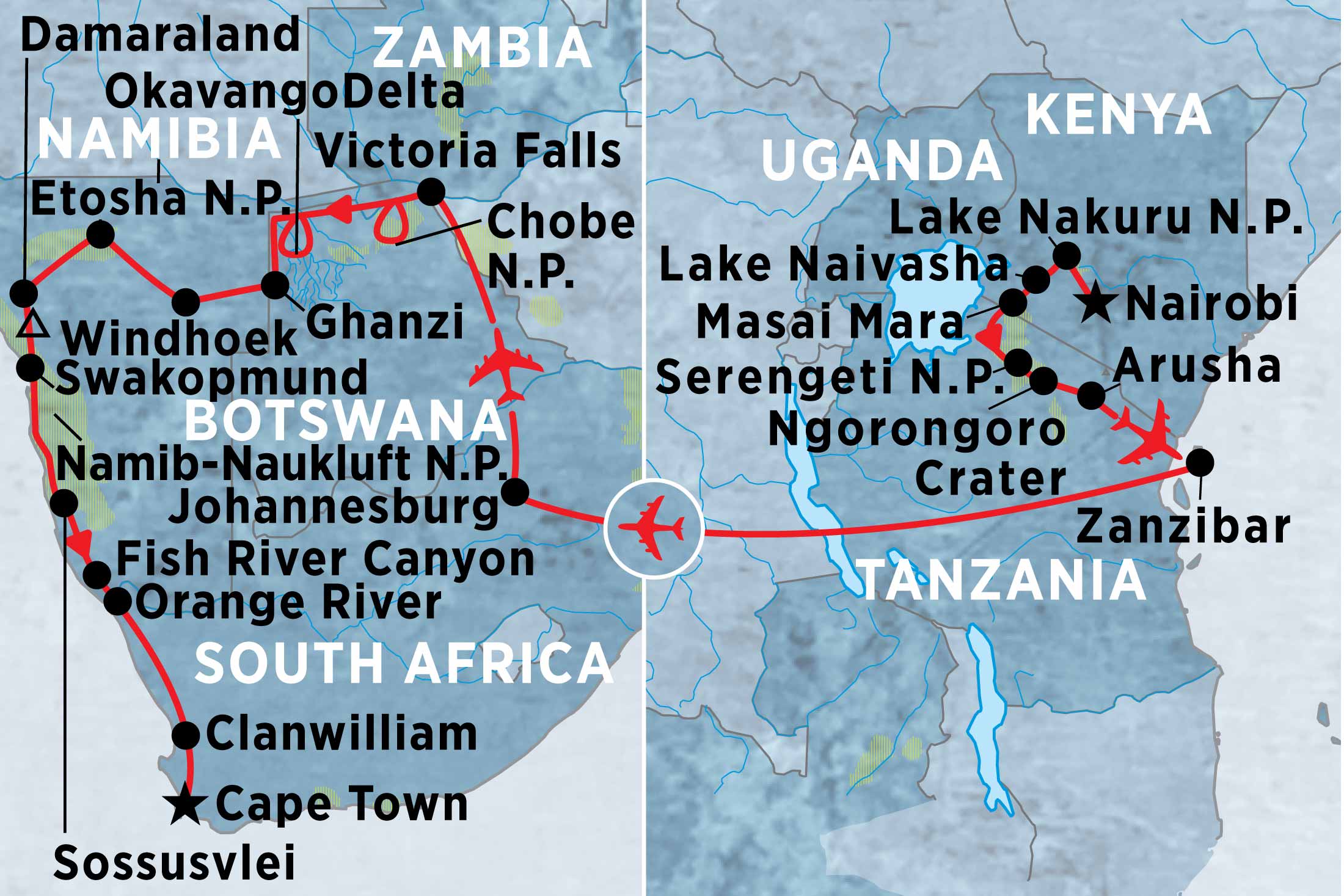
Itinerary
Day 1 - Starting: Nairobi & Finishing: Nairobi
On arrival in Nairobi, you will be met and transferred to your hotel (approximately 45 minutes). There will be a trip briefing at the hotel at 6pm this evening when you'll meet your leader and group. The rest of the day will be at your leisure – Nairobi, the capital of Kenya, was established at the turn of the 20th century by Europeans as a stores depot during the construction of the East African Railway. Without plan or design, it established itself as the capital of the British protectorate, and today has a population of around three million. Perhaps visit the Karen Blixen Museum, the Langata Giraffe Centre, or have a meal at the famous Carnivore Restaurant, where meat lovers can taste a variety of barbecued game meat. Notes: Please provide your flight details at the time of booking, or at a minimum 15 days prior to travel, to organise the included transfer.
Day 2 - Starting: Lake Elementeita & Finishing: Lake Elementeita
Depart Nairobi after breakfast and head north, driving along the escarpment of the Great Rift Valley (approximately 4 hours of driving in total). You'll head for Elsamere, stopping for lunch with the lake as a serene backdrop. 'Elsamere' is the former home of the writer Joy Adamson, whose 1960 book 'Born Free' helped bring wildlife conservation into the mainstream. The house is a veritable museum that dedicated to the works of Joy and George Adamson, with many photos of Elsa, the lioness that started it all. After lunch, you'll embark on a boat trip across Lake Naivasha, the highest of all lakes in the Great Rift Valley and home to many a hippopotamus. Continue to your tented camp, arriving in the early evening. The camp is located on a lava outcrop commanding stunning views over the private Soysambu Conservancy towards the World Heritage Site of Lake Elementeita. The Camp’s dining area features an outdoor terrace with camp fire pit and a safari bar. The terrace overlooks a water hole which attracts wildlife in the mornings and evenings.
Day 3 - Starting: Lake Nakuru National Park & Finishing: Lake Nakuru National Park
This morning you will visit Lake Nakuru National Park by 4WD. Mornings can be cold so it's important to bring warm clothes. You might see why this great soda lake has been described as the world's greatest ornithological spectacle; it amazingly turns into a sea of pink on occasion. Flooding in recent years has unfortunately caused a decline in birdlife. The park boasts substantial numbers of other species, including waterbuck, reedbuck and gazelle. Leopards are also to be found here, and the chances of sighting one are significant. Keep your eyes peeled, too, for one of Africa's most endangered creatures, the elusive black rhinoceros (white rhinos are much easier to spot).
Day 4 - Starting: Masai Mara National Reserve & Finishing: Masai Mara National Reserve
Today you will head southwest to the Masai Mara (approximately 6–7 hours). This is arguably one of the finest game reserves in Africa. You'll embark on an afternoon game drive in the truck on the way to your tented camp, when you could have the good fortune to observe a black-maned lion, leopard or a cheetah. Set in what is considered Kenya's prime wildlife area, Mara Leisure Camp is located along the Talek River, on the northern boundary of the Masai Mara Game Reserve, and is completely unfenced. The cosy dining area, open fireplace and tented accommodation make for a unique and intimate ambience. Enjoy dinner served al-fresco in a clearing overlooking the sweeping Masai Mara plains or in the spacious dining tent.
Day 5 - Starting: Masai Mara National Reserve & Finishing: Masai Mara National Reserve
Explore more of the park by 4WD today with further game drives in the morning and afternoon. Witness the wonderful procession of wildlife that inhabits the area. Wildebeest, zebra and gazelle are plentiful, and you might even spot predators keeping a casual eye on their movements. Elephants, giraffes and elands are also commonly sighted, along with plenty of bird life. The area is known for its rolling green plains and riverine woodlands, and amongst the many species of game, a black-maned lion, leopard or cheetah might appear, with some luck. Once we return to the tented camp there is an option to go back out and visit a Maasai Village. These visits can be fascinating to learn about the different culture and way of life of traditional Maasai people. However, please note that these villages exist primarily as businesses. You will be charged an entry fee of USD20-25 and they will try very hard to sell souvenirs to you. An optional balloon ride over the Masai Mara at sunrise is an unforgettable experience. If you have pre-booked this activity you will be picked up from camp before dawn and driven to the launch site for a safety briefing with your pilot. You then glide through the dawn, sometimes at tree height, making the most of the amazing photo opportunities. Sometimes you'll ascend to get an overview of the enormity of the Masai Mara plains and the early-morning movements of the teeming herds. Upon landing you'll be treated to a bush breakfast before rejoining your group. As dusk falls, a variety of animals might also be visible in the vicinity of your camp.
Day 6 - Starting: Migori & Finishing: Migori
Say goodbye to the Mara and head to Migori (approximately 6.5 hours). On the way you will stop for lunch (at your own expense) and visit a local soapstone factory in Kisii. This town is home to the best soapstone carvers on the continent. Their products are quite popular around the world. It's a favourite stopover for travellers seeking a taste of the exquisite Kisii carvings. Notes: Accommodation tonight is quite basic, due to very few options in the area and the need to break up the journey.
Day 7 - Starting: Serengeti National Park & Finishing: Serengeti National Park
Cross into Tanzania before heading to the Serengeti National Park (approximately 8 hours, not including time spent at the border). The ‘Endless Plains’ of the Serengeti span some 14,700 square kilometres and capture the essence of Africa, with their main claim to fame the 3 million or so animals that make their home here. Massive numbers of grazing animals and various predators can be seen – wildebeest, zebra, gazelle, lion, cheetah, warthog, hyena, hippo and ostrich – and the interaction between the many species often provides some of the best wildlife viewing opportunities in the world. You'll take a game drive en route to your camp and watch the landscape change within the park from the vast treeless central plains to thick scrub and forest in the north. Linking these areas is the savannah, dotted with acacia trees and magnificent rock outcrops. The next two nights are spent in a safari camp that’s at the heart of the park but away from the crowds: Kati Kati mobile tented camp. Meru-style tents are a great place to relax at the end of the day with their big beds, table, clothes rack, sink, shower and a toilet. The camp has a comfortable lounge area, and a cosy mess tent located in the centre of the camp where meals are served. The campfire is ready every evening for appetizers before dinner. It's also eco-friendly, with solar power.
Day 8 - Starting: Serengeti National Park & Finishing: Serengeti National Park
Today you will start around sunrise for a morning game drive and follow that up later on with an afternoon game drive, as the animals tend to be more active in the cooler hours of the day. You will usually return to camp during the hotter hours in the middle of the day, where you will enjoy a hearty meal, relax and maybe take a siesta. Depending on wildlife movements and opportunities for sightings, the drive may continue through lunch and last all day. In this case, you will return to the lodge in the late afternoon. Perhaps the ultimate way to go game viewing is on a hot air balloon safari over the great plains of the Serengeti and Masai Mara. Hot-air ballooning in East Africa can be an unforgettable experience, an exceptional way to see this part of the world. We strongly recommend booking this extra activity prior to departure if you're interested.
Day 9 - Starting: Ngorongoro Highlands & Finishing: Ngorongoro Highlands
This morning you’ll enjoy your final sunrise game drive to soak up the memorable Serengeti National Park vistas, before traveling to the Ngorongoro Crater (approximately 5 hours). The rest of the day is free for your leisure. Your lodge for the next two nights is beautifully located on the rim of the Ngorongoro Crater. Millions of years ago, the eastern side of the African continent started to crack and slide away, leading to the formation of giant volcanoes – one of which was Ngorongoro. It’s estimated that it once rivalled Kilimanjaro in size, and then the lava ‘lid’ collapsed, forming the giant crater (8,280 square kilometres) that you can see today. The ash from the volcano created fertile soil that encouraged rich savanna grasslands, which now support the largest herds of hoofed animals in the world. This of course attracts numerous predators and birdlife. In the late afternoon be sure to take in incredible vistas as the sun sets over the crater.
Day 10 - Starting: Ngorongoro Highlands & Finishing: Ngorongoro Highlands
Today you will explore the world-renowned Ngorongoro Crater, widely regarded as a microcosm of natural habitats in Africa and often touted as a veritable Garden of Eden. Within this crater lies so many types of ecosystem, including riverine forests, open plains, freshwater and alkaline lakes. The scenery is spectacular as you descend almost 600 metres down to the crater floor. There is every chance you will see a considerable variety of wildlife in this compact area – hopefully you'll see some or all of the 'big five' creatures that rule here. Animals within the Ngorongoro Crater are less shy of people and safari vehicles, so it's easier to see them up close. The Masai are permitted to water their cattle at the permanent lake and can be seen leading their animals in and out of the crater. The most commonly seen animals are the lion, wildebeest, zebra, eland, bushbuck, cheetah, jackal, buffalo, Grant's gazelle and Thompson's gazelle. You may even catch a glimpse of the highly endangered black rhinoceros. In the afternoon you will leave the crater and return to the lodge for a second night. (National park regulations stipulate that vehicles are only allowed a maximum of six hours in Ngorongoro Crater). The afternoon is yours to spend as you please, perhaps with optional walking activities or a coffee tour.
Day 11 - Starting: Zanzibar (East Coast Beaches) & Finishing: Zanzibar (East Coast Beaches)
After breakfast head to Arusha (approximately 4 hours) where some of the group may be leaving the trip, along with your tour leader from the East Africa sector. Those continuing to Zanzibar are transferred to Kilimanjaro Airport for a flight. You will be unescorted for the Zanzibar sector, but our local representatives will be on hand to look after you. Just the name Zanzibar conjures up images of a remote island paradise where the water is transparent and the air is filled with the heady scent of spices. On arrival you will be transferred to the east coast of the island and your wonderful resort situated along beautiful white sands. Here you can run your hands through the perfectly fine white sands and enter the warming embrace of the Indian Ocean – deep blue in colour, filled with marine life, and perfect for swimming and snorkelling. This is the perfect place to climb into a hammock with drink and a book, watch a gorgeous sun set and then relax underneath a blanket of glowing stars.
Day 12 - Starting: East Coast Zanzibar & Finishing: East Coast Zanzibar
During your time on the coast you can enjoy swimming or simply relax on the beach. Or there are a number of optional activities to take advantage of, from full or half-day deep sea fishing expeditions, sailing trips on a dhow ship, snorkelling, or a visit to Prison Island (named for its former use but now home to giant land tortoises). There is a fitness centre at the accommodation for those who want to exercise to work off all the excellent meals that are served in the restaurant. There’s also a swimming pool, water sports, restaurants, bars and shopping bazaar. It's a perfect place for an unwind during your busy African journey.
Day 13 - Starting: Zanzibar (Stone Town) & Finishing: Zanzibar (Stone Town)
Your third day in Zanzibar will be spent in atmospheric and historic Stone Town (approximately 1 hour), and the remainder of the day will be at your leisure. explore Stone Town’s maze of narrow streets with whitewashed coral stone buildings, magnificently carved, brass-studded teak doors, quaint shops and bazaars that all reflect a unique blend of architectural traditions. The market and bazaars are fascinating and are ideal spots for topping up your spice collection at home or shopping for souvenirs. Zanzibar was also one of the headquarters for slave trading and the starting point for many of the famous explorers such as Speke, Livingstone, Burton and Grant. From here they ventured into the vast interior of east Africa. Perhaps learn more about the island’s history at the Old Fort, the Slave Markets, or at the House of Wonders (so-called because it was the first building on the island to have electricity and running water), which houses the Zanzibar National Museum of History and Culture. Alternatively you might like to join a highly recommended tour of the spice plantations, which can be easily arranged through your local operator, Zanzibar Unique. On this tour you'll have the opportunity to see and taste a variety of spices (cloves, cinnamon, nutmeg, mace, etc.), as well as tropical fruits. Your guide may also introduce you to some rare plant species, including the henna bush and lipstick tree. Perhaps end your time in Zanzibar enjoying a dawa cocktail as you watch dhows sail along the Zanzibar coastline.
Day 14 - Starting: Johannesburg & Finishing: Johannesburg
Today you will fly south to Johannesburg - the largest city in South Africa. You will be unescorted during this portion of the tour. You can expect to arrive at the Peermont Metcourt Hotel Johannesburg by mid-afternoon. On arrival please make your way to the shuttle terminus located in the Parkade building, between the domestic & international terminals. If you are unsure on where to go please ask for directions at the Information Desk located within the arrivals area. At the shuttle terminus please wait for the black and gold Emperors Palace bus at the terminus. The shuttle runs every 20 minutes. Tell the driver you are staying at Peermont Metcourt. Peermont Metcourt is one of many hotels located within the Emperors Palace Hotel Casino Convention Resort, which is conveniently situated alongside OR Tambo International Airport. There are a number of facilities within the resort such as restaurants, entertainment and retail shops so you won’t need to venture out of the resort to have dinner - tomorrow you'll be flying direct to Victoria Falls. Notes: The Courtesy Shuttle runs between the hours of 6am and midnight daily, for any transport requirements after this time you will need to arrange a private transfer or take a taxi.
Day 15 - Starting: Victoria Falls & Finishing: Victoria Falls
This morning you will take the courtesy airport shuttle from your hotel to Johannesburg International Airport, for your flight to Victoria Falls. The shuttle service departs from the hotel at 20 minute intervals. You will be met by a Peregrine representative and transferred to your lodge (approximately 45 minutes). The afternoon will be free to spend at your leisure. Take a stroll around town and book with local tour operators any optional activities that you’d like to do while you’re here. Victoria Falls is known as a centre of adventures and in free time tomorrow you could white water raft on the river below the falls on some of the best rapids in the world or take a leisurely cruise at sunset. For something a little more hair-raising there are rope-based activities around the gorge, or a jaw-dropping helicopter flight over the falls and the Zambezi Gorges. This evening at 6pm there will be a welcome meeting where you will meet your new leader and the rest of the group.
Day 16 - Starting: Victoria Falls & Finishing: Victoria Falls
This morning you will visit the magnificent Victoria Falls, named by Dr David Livingstone in honour of his English queen. One of the world's true natural wonders, Victoria Falls form the largest sheet of falling water in the world when in full flow. The falls are also commonly referred to by their Kololo name, Mosi-oa-Tunya, or 'the Smoke That Thunders' and you’ll see and hear why on a morning tour. Once inside the park, your guide will take you through the falls area, stopping at different vantage points along the way to explain the history of the falls and their surrounds: hundreds of miles away in northern Zambia a little spring wanders along the earth, eventually ending in over 1 million gallons of water torrenting down a 328-foot high drop a mile wide. After your tour, you will return to your lodge, where the rest of the day will be at leisure to enjoy any optional activities you may have booked. Tonight you'll enjoy an incredible dinner at the Boma Restaurant. A Boma was historically an enclosure constructed from closely-knit sticks used to keep in animals or fortify a village. The Boma creates an atmospheric setting for a dinner, lit by torches and surrounded by bush. The mouth-watering main course is a buffet of local meats, which may include warthog, buffalo, crocodile, impala and more. Throughout the meal you'll be entertained with local song and dance, with everyone given an African drum and encouraged to join the party. Notes: If you do not wish to join in with the drumming you can choose an earlier session for dinner.
Day 17 - Starting: Chobe National Park & Finishing: Chobe National Park
Follow the Zambezi River to Botswana and make your way to Chobe National Park (approximately 2–3 hours, not including border formalities). You will arrive at your lodge at around midday, which is located on the bank of the Chobe River just outside of the National Park. This is where you'll spend the next two nights. Here you can relax by the pool or take an optional afternoon game drive in Chobe National Park. This can be arranged locally with your leader. If you take a game drive you’ll almost certainly see elephants drinking at the waters' edge, and keep your eyes open for the park’s large herds of buffalo too. Accommodation at Chobe Safari Lodge is usually in rondavels – comfortable individual circular thatched units with private facilities and balconies. The lodge bar is a great place to enjoy a drink at the end of the day, and dinner is often served outside with a smorgasbord of options. The lodge pool is also the perfect place to wash off the heat off the day or safari dust.
Day 18 - Starting: Chobe National Park & Finishing: Chobe National Park
Today is a full day of wildlife exploration. You’ll begin with a morning game drive to see the animals at their most active, followed by some time back at the lodge for relaxation during the hottest part of the day. Then, in the late afternoon, you’ll take a boat trip out on the Chobe River. Chobe National Park is archetypal big-game county, where huge herds of buffalo and elephants are matched by the size of the lion prides. An estimated 70,000 Kalahari elephants roam the park and are the largest known subspecies of elephant in the world by size. You may also see zebra, impala, wildebeest and giraffe. The bird life on the river can be truly spectacular with sightings of saddle-billed storks, malachite kingfishers, fish eagles, goliath herons and beautiful bee-eaters. Elephants will often congregate to drink and play in the river, and there are good hippopotamus numbers too. You might even spot a crocodile on the riverbanks – although they are surprisingly shy. Extra layers of clothing are essential here, especially for cold early mornings in the open vehicle.
Day 19 - Starting: Makgadikgadi Pans & Finishing: Makgadikgadi Pans
Heading south, you will continue your journey (approximately 6 hours) to the Makgadikgadi Pans for an afternoon excursion. Witness the immensity of this sprawling salt flat, one of the largest in the world. Later you will head to your lodgings, the marvellous Nata Lodge, located just on the edge of the pans. Accommodation here is in air-conditioned thatched chalets built on stilts, with a charming, rustic African quality. The chalets have ensuite bathrooms with an indoor freestanding bath and an outdoor shower. Spend some time unwinding by the pool or relaxing in the lounge area while you take in your surroundings and reflect on the day's adventure.
Day 20 - Starting: Maun & Finishing: Maun
After breakfast this morning, it's time to head to Maun, the gateway of the Okavango Delta (approximately 5–6 hours). For those interested, there is the opportunity to fly over the delta in a small plane for a bird's-eye view. This is a great way to appreciate the vast scale of this waterscape. The delta has the shape of a hand – a palm permanently filled with water, and the fingers flooded seasonally, creating a blue-green wilderness of fresh water. This area is an incredible source of life in a country that is 80 per cent arid. Your leader can give you more information on the flight and how to reserve a place. Otherwise, the afternoon yours to spend as you please.
Day 21 - Starting: Okavango Delta & Finishing: Okavango Delta
Venture to the Okavango Delta (approximately 6 hours) and board your speedboat. This will take you to your home for the next two nights, a houseboat in the middle of the delta. You will need to pack a small bag or backpack for this trip, as there won't be room for everyone's full luggage. The houseboat has twin-share cabins with bedding, towels and mosquito nets provided (however, no single supplement is available on these nights). There is also a dining area on the deck, tea- and coffee-making facilities and a small collection of books and board games. As evening falls, head to the deck, where your captain will serve dinner. Enjoy an ice-cold sundowner and take in the ambience of the Hippos moving about at the water's edge. Notes: Cabins are very small and basic, but it is of course unlikely that you will be spending much time in them. On occasion, the houseboat will be unavailable due to regular servicing and maintenance requirements; if this occurs, alternative arrangements on land will be made.
Day 22 - Starting: Okavango Delta & Finishing: Okavango Delta
This morning after breakfast you will take a speedboat and 4WD to a nearby poling station. From here you will experience the myriad waterways in a traditional dugout canoe (mokoro) with a local guide. Your guide will also take you on a nature walk around one of the many Islands in the Delta. After a picnic lunch, return to the houseboat for some relaxation time. You might like to read a book or do some fishing. In the evening, enjoy a drink, pull up a chair and witness the often breathtaking sunset before your captain serves up dinner once again on the deck.
Day 23 - Starting: Ghanzi/Central Kalahari & Finishing: Ghanzi/Central Kalahari
Travel on to Ghanzi, the 'Capital of the Kalahari' (approximately 7 hours). Your accommodation tonight is at a community project in Ghanzi and is a little more basic than what you will encounter throughout your journey. However, the concept and experience of Dqae Qare San Lodge is well worth it. It is run and owned by the local San Bushmen and supports the San D'Kar community through employment. There is an impressive concentration of bird life here, and you may wish to go for a walk before dinner to stretch your legs after today's long stint in the vehicle. A three-course meal, prepared by the local women, will be served in the communal lounge and dining area. There is also an 'honesty' bar with wine, beer and soft drinks available to buy. Later this evening you will be treated to an enlightening cultural experience. As you sit around the campfire, the Bushmen will share their extraordinary knowledge of the Kalahari and culture through stories and traditional dancing.
Day 24 - Starting: Windhoek & Finishing: Windhoek
Cross the border into Namibia and head to Windhoek (approximately 6 hours). On arrival, take a stroll around the town and visit some of its museums or perhaps take a township tour. Take in the German architecture evident in a number of buildings. The finest are the Tintenpalast (Ink Palace), the Christuskirche (church), the gymnasium and the Genossenschaftshaus. As this is a combination trip, some of your fellow travellers may be leaving you this evening. There will be another group meeting at 6pm and it will be a great opportunity to meet any new travellers who will accompany you through Namibia.
Day 25 - Starting: Etosha National Park & Finishing: Etosha National Park
Travel to Etosha National Park (approximately 7–8 hours). Time permitting, you might embark on a short afternoon game drive when you arrive on Day 2. This is one of the world's premier game-viewing destinations and the third largest wildlife sanctuary in the world. Spotting animals in the park is relatively easy due to the man-made waterholes and the large, sparsely vegetated pans. The bushland surrounding the pans is difficult to see through, but there are enough clearings, pans and waterholes to allow for sightings. Namibia has protected its game reserves against poaching, so there are large herds of elephants, antelope and other herbivores.
Day 26 - Starting: Etosha National Park & Finishing: Etosha National Park
Enjoy a full day of game viewing in the vehicle. The Etosha Pan (the word 'pan' meaning either a wet or dry waterhole) that forms about a third of the park is a vast shallow depression 139 kilometres long and 50 kilometres wide, and is all that remains of a once great inland sea. It is essentially dry for much of the year, resulting in a shimmering sea of white salt. However, a number of permanent springs located along its southern shores provide sustenance for the many wild animals that are attracted to the springs. Keep a close eye on the landscape for black rhino, Hartmann's mountain zebra, black-faced impala, roan antelope and the tiny Damara dik-dik. The park is also home to some 340 bird species. Afterwards you will return to the lodge, where you can go for a refreshing swim in the pool. Reflect on the day's adventures with your fellow travellers over dinner.
Day 27 - Starting: Damaraland & Finishing: Damaraland
Venture off the beaten track as you head into the heart of Damaraland (approximately 7 hours driving time in total). You should arrive at your lodge early this evening. Accommodation for the next two nights is situated on the banks of the Hoanib River in the Khowarib Gorge and is a feature stay on this itinerary. Ensuite tented chalets have viewing platforms over the riverbank with outdoor bathrooms. Home to Namibia's highest peak, ancient rock paintings and petrified forests, the harshly beautiful and sparsely populated Damaraland region is a land of extraordinary contrasts. On the way to your lodge, you will spend the afternoon visiting the surrounding sights such as Twyfelfontein Heritage Site and the Petrified Forest. Depending on the time of year, you might be lucky enough to see the desert elephants that roam the area. Many of the roads we travel on today will be untarred and often corrogated. They are some of the worst on this itinerary so be prepared from some extra bumps. We will be accompanied by local guides at both the Petrified forest and the Twyfelfontein sites. The guided walks take between 30-60mins and although not difficult there are some steep rocks and hills at the Twyfelfontein site. It can get hot at this time of day so be sure to have a hat, sunscreen and a bottle of water with you.
Day 28 - Starting: Damaraland & Finishing: Damaraland
Today is a free day for you to explore the region and perhaps look at some of the optional activities in the area. There are a number of optional activities that the lodge staff can organise for you including guided nature walks, a village visit to meet the local Himba people, or a 4x4 safari to track Elephants. Notes: Daytime temperatures in this area often peak around 30°C, so it's best to see sights as early as possible before the heat becomes too intense. This way you can spend the remainder of your day back at the camp, relaxing by the pool or in the shade.
Day 29 - Starting: Swakopmund & Finishing: Swakopmund
Travel on through the Namib Desert today (approximately 8-9 hours) to reach the Atlantic Ocean coastline. Take in the beautiful, diverse and colourful landscapes that stream past along the way; mountains, sand dunes, ocean waves and, shipwrecks. Your destination is the beachside town of Swakopmund on the Skeleton Coast. Upon arrival at Swakopmund, you will check into your hotel and have free time to enjoy this interesting township of German-Namibian atmosphere. The accommodation is within walking distance of the town, and you can enjoy a walk on the beach, or visit the open-air markets or local museum. Your leader will take you to a local activity centre where a range of activities will be on offer. We have not risk assessed all activities and only those listed in our trip notes are recommended. If you are unsure please check with your leader. Please note that it is against company policy for leaders to facilitate the booking of any activities that have not been risk assessed or do not adhere to our company’s Responsible Travel policy and ethos. This includes organising transport to and from these activities in our vehicles.
Day 30 - Starting: Swakopmund & Finishing: Swakopmund
With free time today, you may wish to take an optional trip north to Cape Cross, a breeding site for Cape fur seals. There can be in excess of 100,000 seals there at any given time, making for quite the spectacle. Quite a smell too, if the wind happens to change direction. Wander the coastline and attempt to document these beautiful creatures in a photo or two, and visit the large cross that sits nearby, left there by Diego Cao (the first European to arrive on Namibian soil in 1485). There are also a number of optional activities available here (at extra cost) for those who are interested.
Day 31 - Starting: Sossusvlei & Finishing: Sossusvlei
Depart your coastal retreat in Swakopmund and head south today towards Sesriem. (approximately 6 hours). Walvis Bay is the hibernation area for thousands of migratory birds, most notably Flamingos. If in season you may take quick detour to see these elegant birds. Continue on past moon valley; an eerie rocky granite valley, and the Tropic of Capricorn. Stop by the small settlement of Solitaire before arriving at your lodge. Scattered with abandoned trucks, cars, petrol pumps and cacti, It's the only place between Walvis Bay and Sossusvlei to feature a petrol station, post office, general dealer, and bakery! The local Apple Pie has earned itself quite a reputation too.
Day 32 - Starting: Sossusvlei / Sesriem & Finishing: Sossusvlei / Sesriem
Make an early-morning visit to Sossusvlei, which lies at the end of an ancient riverbed. This is a great opportunity for unsurpassed views of the surrounding area. Remarkably, once every ten years the dry cracked earth of the Sossusvlei salt pan transforms into a luscious flowing river which attracts countless animals. Climbing to the top of Dune 45 will reward you with spectacular vistas of the surreal desert landscape. After breakfast head to Dead Vlei. A clay pan well known for the iconic postcard like images taken here by many. The pan is surrounded by some of the highest dunes in the world, "Big Daddy" or "Crazy Dune" average about 350m. If you'd like to avoid a long walk in the sun you can opt to pay for a 4x4 transfer from the 2x2 car park out to the Dead Vlei entrance point. This will cost approximately 100NAD per person. In the afternoon you will visit Sesriem Gorge, tranquil natural corridor you can walk through and explore. The canyon was caused by a continental shift two to four million years ago in the 18-million year old rocks. The people who lived in the area used to pull buckets of water up from the depths with six knotted belts. Therefore, the canyon was named after the Afrikaans word “Sesriem” meaning “six belts”. Head back to the lodge for the evening.
Day 33 - Starting: Fish River Canyon & Finishing: Fish River Canyon
Depart Sossusvlei early this morning and head to Fish River Canyon (approximately 8-9 hours ). If we have time we will check into our lodge quickly before heading to the Canyon for sunset. At 500 metres deep and over 160 km long, Fish River Canyon is one of the largest canyons in the world, ranking close in size to Peru's Colca Canyon and the Grand Canyon in the USA. You will stop at various lookouts that reveal fantastic views. Keep an eye out for some of the birds that inhabit this area, including plovers, wagtails, hammerkops and herons. If you're lucky you might even catch a glimpse of a baboon or antelope at dusk. In the afternoon, the magnificence of the canyon is amplified as the setting sun reflects off walls and changes their colour. There are remarkable photographic opportunities here, and you'll have plenty of time to take in the sunset glows before heading to your lodge. It's easier to see why the Canyon Lodge is a feature stay on this trip. The natural stone chalets and perfectly landscaped gardens really make it feel like an oasis in the middle of nowhere.
Day 34 - Starting: Orange River & Finishing: Orange River
Farewell Fish River Canyon and head on to Orange River, just a short 2.5-3hr drive away. You should reach your destination on the banks of the river by lunchtime. The Orange River is the longest stream in South Africa, running from high up in the Drakensberg mountain range and into the Atlantic Ocean. This stream is significant for its role in transporting diamonds, which in turn leaves the deposits that are found along the Namibian coastline. Set off this afternoon on a 10km canoe journey down the Orange River. The canoe trip will be done in 2 man canoes with a local guide. It is a slow paced trip covering approximately 10km and we should be travelling down stream for most or all of the trip.
Day 35 - Starting: Lambert's Bay / Clanwilliam & Finishing: Lambert's Bay / Clanwilliam
Leaving Namibia behind, you will cross the border and head into South Africa (approximately 8 hours), passing through landscapes that feel unchanged over thousands of years, and then scenery of expansive wild flower carpets and Rooibos tea farms. Arrive at your guesthouse in the late afternoon or early evening, depending on how much time it takes for border crossing formalities and photo stops along the way. Tonight will be spent in the quaint town of Clanwilliam.
Day 36 - Starting: Cape Town & Finishing: Cape Town
Travel to Cape Gannet Island today in Lambert's bay ( approximately 1hr ). At the right time of the year, you might be lucky enough to view the spectacular flocks of gannet, which make use of the spot for breeding in August and September. The colony at Lambert's Bay is the most accessible of the six gannet colonies in South Africa and Namibia. It's amazing to watch these creatures in their tightly packed community, as they wheel, land and settle into their designated positions. Enjoy a delicious seafood lunch today at a local open-air restaurant which boasts world-class ocean views. Continue on to Cape Town ( approximately 4-5hrs ) where this trip finishes on arrival. Notes: If you're flying out of Cape Town today, it's best you don't book a flight that departs before 10 pm. You can choose to stay on in Cape Town if you wish, just ask about additional accommodation or the Cape Town Independent Experience when you book the trip. If you have extra time, Cape Town, with its internationally recognised beaches, is a great place to kick back and relax. If you'd rather get active, hop inside the revolving cable car and set off on one of hundreds of hiking trails that criss cross Table Mountain to its summit, stopping off the admire the views of Camps Bay below. If you've got energy left perhaps strap on a harness and abseil down. Other attractions worth a visit include the Kirstenbosch National Botanical Gardens, Robben Island, and the Cape Point Nature Reserve.
View Dates

